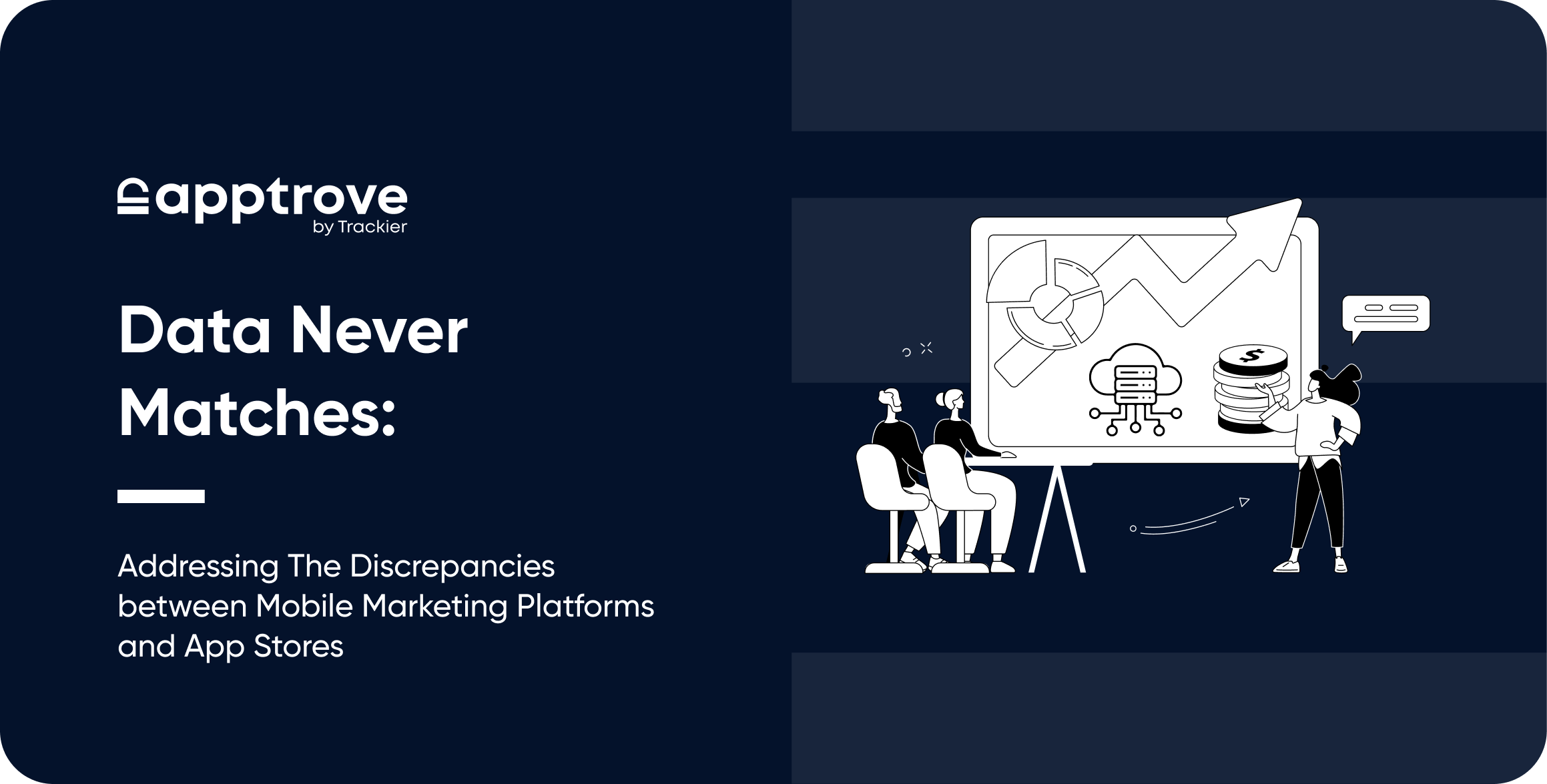Before we dive deep into the reasons for the difference in the data from the Analytics Platform (Google Play Store or App Store) and Mobile Marketing Platforms (trackers), let me first assure you that this dissimilarity is completely normal. However, marketers need accurate data to inform their decisions so it falls upon them to address this discrepancy, but more importantly, find out how to minimize them.
You have come to the right place! In this article, we will explore how marketers can get ahead of this issue and use the collected data in a more profound and analytical way.
Let’s Start by Looking at the Reasons Why We Experience These Discrepancies
Usually, a mobile marketing platform counts an install when the app has been downloaded and opened on the user’s device. Whereas the App Stores count each and every install even if the user hasn’t even opened the app once. Wondering why the attribution platforms do not count each and every install? Well, it’s because platforms integrate SDK (Software Development Kit) into the app which is the only source of information for third-party apps. SDK allows the platform to detect and track the events in the app like registration and purchase. Now if the user does not perform any activity on the app, it makes it difficult for the third-party platform to track it.
So when the next time you extract the acquisition data from both the platforms and find a difference; know that the following reasons are behind the discrepancy:
- The application was installed by the user but was never opened.
- The user opened the app after a few days.
- They installed, uninstalled, and then installed the app again, making it difficult for the SDK to track it.
- The SDK was initialized after a few days when it noticed extra in-app behavior.
It’s important to note that when a user installs and reinstalls an app, it is considered as two installs by the app stores but the attribution platforms would still consider it as one. It will give significance to the first launch made on the app. Adding to that is the difference in the time zones between both platforms. The App Stores display data as per the local time zone and the mobile marketing platforms display according to the UTC±00:00 time zone. You can set the app-preferred time zone to reduce this discrepancy.
Furthermore, the number of installs may also vary depending on the account and devices a user has. As many of you would know, generally Google Play Console or iTunes Connect count the installs according to the user ID while the attribution platforms count them as per the device ID. For instance, consider you have two different devices but the same account ID. Now when you install the app on both devices, the Google Play store will count that as one install but the mobile marketing platform will see it as two installs.
Even the tracking of data in some of the platforms varies. Google Adwords registers the data from the day a user clicks the ad and not after its installation but the App Store starts reading the data when a person has installed the app.
Now You Must be Wondering How to Minimize These Discrepancies
By optimizing your attribution platform and studying the data across various platforms wisely.
Here are the tips that will help you!
- Usually, there’s one launch in around 90% of the mobile app downloads. And this can vary significantly in different geos and verticals. So if your mobile marketing platform shows under attribution, work on improving the journey of the user from the day of ad click to the day of launch. This can be done through push notifications, reminders, offers, and more.
- Use longer periods of time as your queried data range so as to record the delayed launches and then evaluate installs in the mobile marketing platform. This will help in minimizing the discrepancy between the number of ‘downloads’ recorded on play stores and the number of ‘launches’ on the marketing platforms.
- Set the app-preferred time zone on the attribution platform to avoid the ‘untimely’ discrepancies.
- To record the clear number of installs and reinstalls of an app, set the reattribution window to 1 to 24 months as per your requirement. This will help you in differentiating what is a reinstall or a new install.
- Use an anti-fraud solution installed on the platform to avoid recording the fraud ‘new installs’ of the app on other devices when there is just one user.
- Sometimes the user downloads an app from out-of-store markets. Well, App Stores do not count it but the attribution platform does. To clearly distinguish this in the data records, set up the correct program as listed in the documentation of the platform.
These are just a few tips and tricks to optimize your mobile marketing platform and evaluate the data with ease and clarity. If you have something more to add, do write to us in the comments below. We will be more than happy to hear or answer any of your queries.






